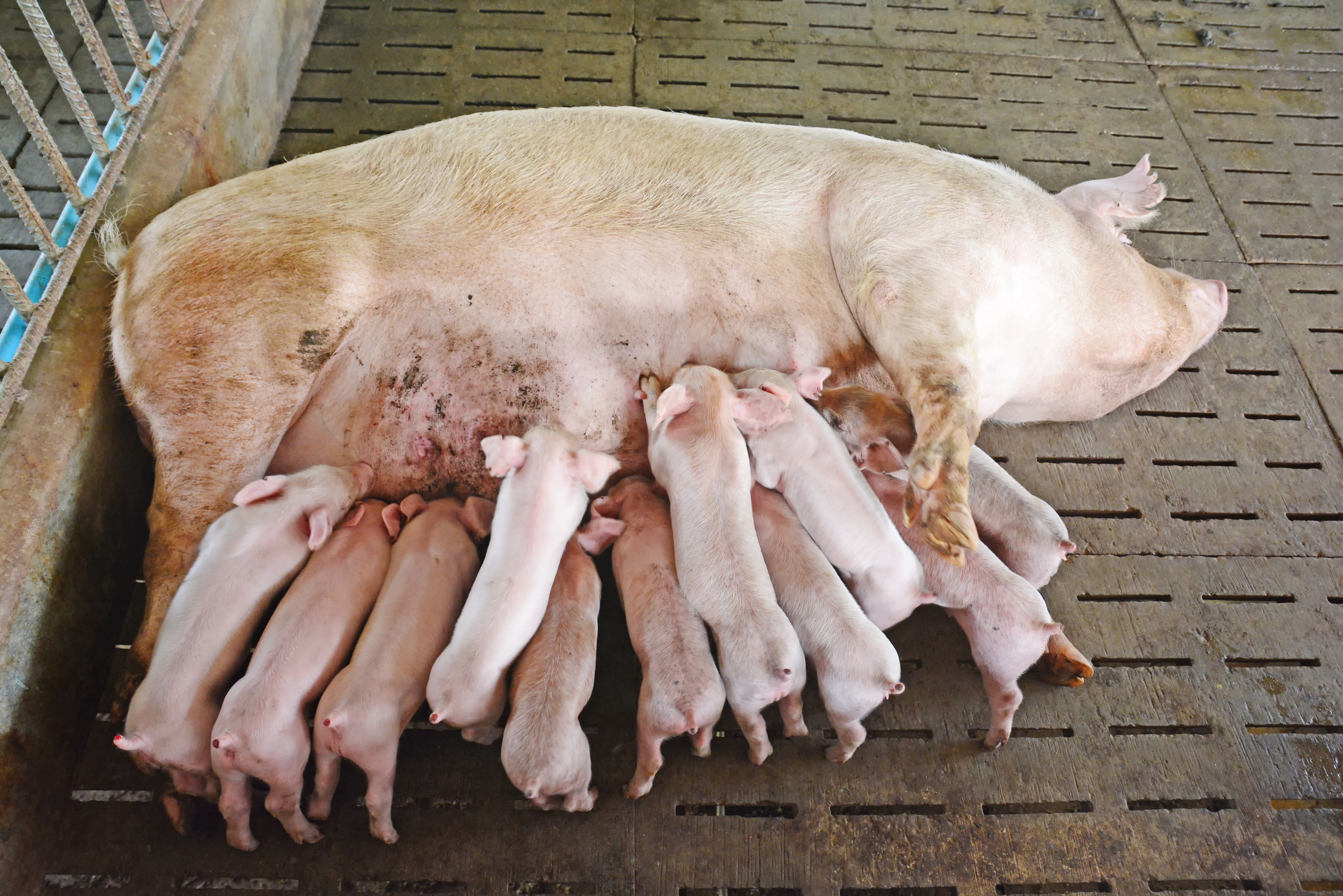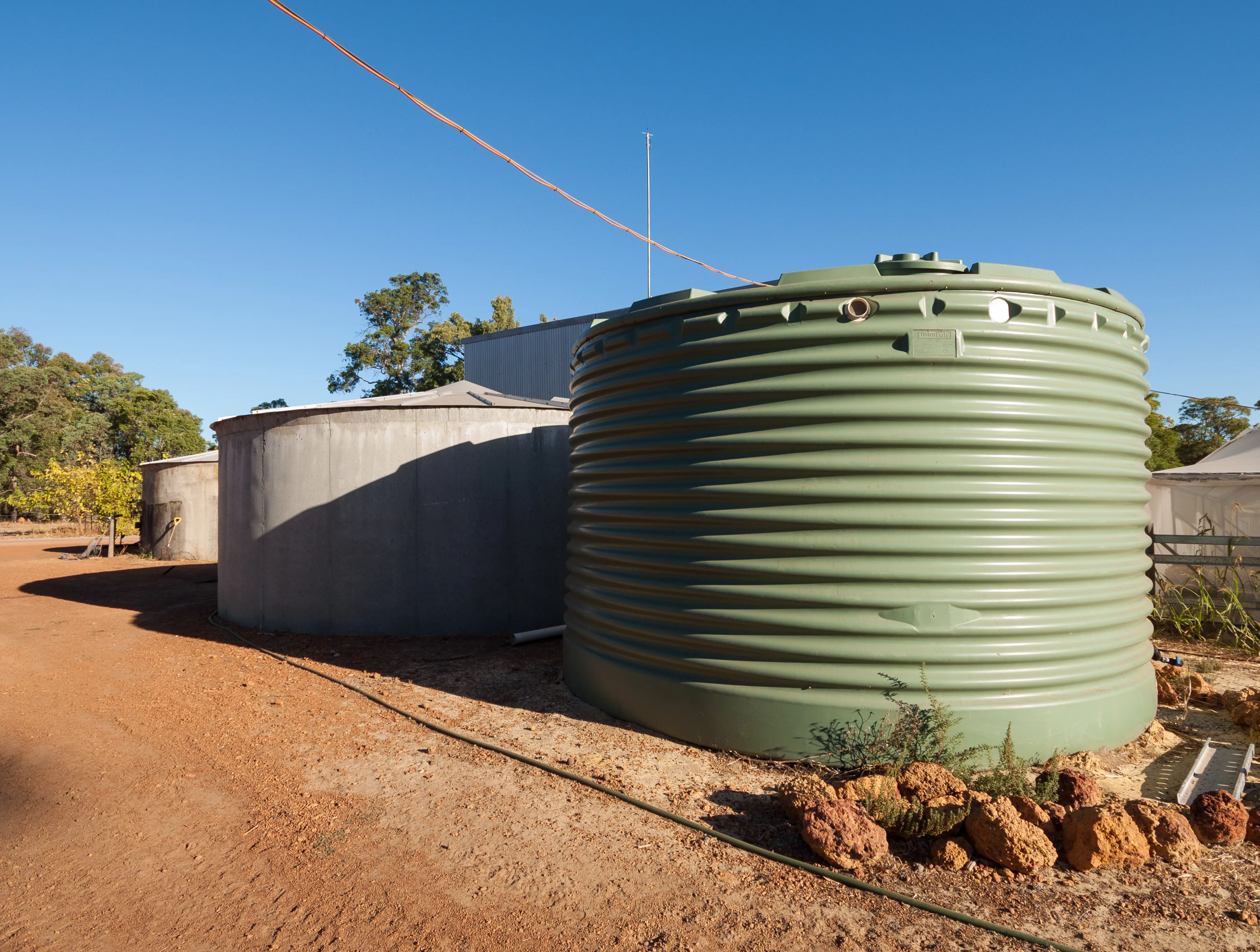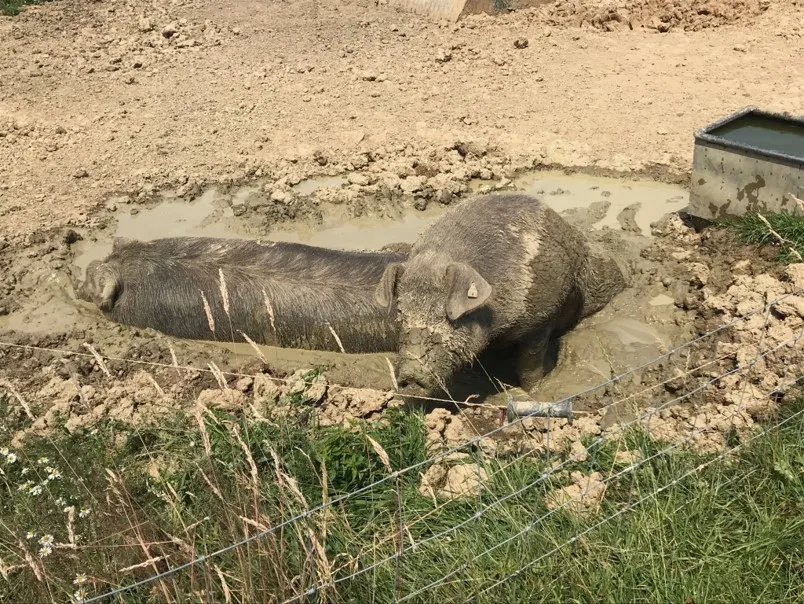



Dealing with drought and evading heat stress in swine
Top tips from across the globe on how to manage high temperatures on farm, how to prevent and treat heat stress in pigs and how to manage water shortages during a drought.Extreme temperatures and water shortages take their toll on pig herds in particular, with heat stress and heat stroke being prominent causes of weakness, diarrhoea and acute distress. Droughts result in restricted water use across all agricultural businesses and in swine herds, water shortages can be catastrophic – continuous access to clean water is critical for pig health. Wallows (mud baths created through pumping water into shallow mud areas) also provide pigs with some relief from the heat but water use restrictions can prevent the maintenance of such areas.
According to advice published on the website of Western Australia’s Department of Primary Industries and Regional Development, “Most animals can transfer internal heat to the outside of the body by sweating and panting – these are the two most important tools for the maintenance of body temperature and form their inbuilt evaporative cooling system. However, pigs do not sweat and have relatively small lungs. Due to these physiological limitations and their relatively thick subcutaneous fat, pigs are prone to heat stress.”
Responsible use of water and keeping your pigs cool are essential to maintaining productivity and welfare in your herd. Below, The Pig Site provides you with a rundown of top tips from our network of producers and experts to ensure you can keep your herd happy throughout the year.
Spotting a struggling pig and how to treat them
When a pig’s internal temperature increases, it reaches a point where it can no longer increase moisture loss through increasing respiration – the ‘heat stress emergency’ point. The animal may pant harder but without relief; this cycle can lead to death. In cases in which heat stress occurs only for a short period of time (two to three hours), no lasting harm has been observed in most individuals.
Clinical signs
• Respiration increases in intensity (panting).
• Lethargy when moving.
• Pig reduces its feed intake to slow the internal heat of digestion (sensible heat) being produced.
• Reduced growth in feeder pigs.
• Reduced milk production in lactating sows.
• Loss in weight.
• Diarrhoea.
• Increased water consumption.
• Increased urine output.
• Muscle trembling and weakness.
Treating heat stress
- Use a cool, wet towel on the neck and back of a pig and change the towel regularly to ensure it is having the desired cooling effect.
- Consider putting diluted vinegar on the skin as it evaporates quickly, removing heat. Once cooler wash off the vinegar if you wish.
- Dribble cold water into the rectum of the affected animal using a flutter valve.
- Feed electrolyte rebalancing solutions to seriously affected pigs.
One top tip: Do not use cold or freezing water to cool pigs down if doing so directly – use tepid water as the shock of cold water has been known to kill pigs.
Keeping pigs cool and hydrated
Indoor housing and ventilation
• Ensure ventilation units are working correctly by performing maintenance checks as soon as temperatures breach thermoneutral zones and ensure that any issues are corrected immediately to avoid having to take emergency measures. Figure 1 indicates thermoneutral temperature zones dependent on pig weight and flooring system.

sub>Thermoneutral zones based on weight of pig and floor type © The Pig Site
• Ensure that stocking densities are reduced during periods of extreme heat if ventilation cannot be improved.
• Do cover any ceiling windows where sunlight shines directly into pig pens.
• Insulate inner barn roofs and use lighter, reflective colours externally to reduce heat absorption and radiation into the barn.
• Provide some barren sections in resting areas that are not covered in straw as it has been proven that pigs will seek barren areas during periods of high heat in order to keep cool. Do, however, maintain straw in pens as it is important for gut fill.
• Producers using bedded packs should ensure that the manure pack is kept to a minimum depth, and dry. Deep, damp manure packs start to compost and release heat and moisture. As the stomach is the heat generation centre, giving the animals minimal bedding allows them to transfer heat to the cooler floor below when they lay down.
• Use a backpack sprayer in confined conditions, such as show pens, as the mist will cool the pig without overly wetting the bedding.
• During periods where water use is not restricted, use a misting system low down in the barn as evaporating water has a cooling effect on pigs’ skin.
"Sprinkling water in one- to two-minute intervals every 20 to 30 minutes allows moisture to evaporate off the pig’s skin before wetting and starting the cooling process over again, and is more effective than leaving waterers on continuously."
-Dr Mark Whitney, Assistant Extension Professor at the University of Minnesota Extension-
Outdoor housing
• Provide access to plenty of shade – artificial (larger arcs and canopies) or natural (trees/woodland). Uninsulated aluminium or bright galvanised steel are perfect for constructing artificial shade canopies.
• Paint arc roof white and/or cover in branches or foliage to reflect light.
• During periods where water use is not restricted, use sprinkler systems around housing and create wallows.
• Apply sunscreen where mud baths and shade cannot be provided.
Piglets
Piglets need continuous access to water at two weeks old and, if left in direct sunlight or in poorly ventilated barns can suffer heat exhaustion, potentially resulting in mortality.
"Provide fresh, cool (or tepid) water in appropriately-sized troughs. Piglets have to be able to reach the water and preferably not be able to tip the trough up. Big pigs = big troughs, and little pigs = shallower troughs. Also, if younger piglets try to drink from a big trough they could fall in and not be able to get out."
-Michaela Giles, APHA and author of The Commuter Pig Keeper-

Sows
Breeding herds are particularly susceptible to an array of reproductive issues, including decreased farrowing rates, smaller numbers born per litter, a reduced number of piglets born alive per litter, higher embryonic deaths during early gestation, a larger number of stillborn piglets and miscarriages. Heat stress is also responsible for increased mortality among sows (Pig Health Today).
"Control supplementary heating in the farrowing house. This should only be necessary for the first 12 hours after farrowing depending on the piglets; if you have dimmers – use them or replace with lower wattage bulbs. Creep areas should be covered and insulated to ensure that heat loss from the creeps does not overheat the sows. To help keep sows cool it may be helpful to wet the sows' necks with cool water; however, ensure piglets do not get wet."
-AHDB Pork-
Boars
Heat stress and dehydration in boars can result in lethargy and reduced libido, increased irritability and aggression, and can degrade semen quality.
The same measures must be taken for the boars as for sows during periods of high temperatures, ie provision of wallows and shades, ensuring adequate resting space, and provision of ample fresh, cool water.
"Infections that raise a boar’s body temperature, or localised infections that raise the temperature of the scrotum and testes, will also result in changes in semen quality for up to eight weeks, similar to those that occur after boars are exposed to environmental heat stress. Maintain close monitoring of boars using a thermometer and visual checks on a daily basis during periods of high temperatures."
-BPEX-
Dealing with droughts
Water conservation is essential during periods of drought, but when it comes to husbandry of livestock, welfare and health comes first. Your herd should always be hydrated and comfortable no matter how strict the water use restrictions are, and issues can be overcome through responsible and sustainable water use.
Protein
In prolonged hot weather, consider feeding pigs the lowest safe level of protein, ensuring the correct essential amino acid balance is maintained. The higher the nutritional protein consumed, the more water pigs require to stay hydrated, therefore reducing protein intake will reduce water required and reduce risk of dehydration.
Water conservation and recycling
Many producers in regions prone to droughts will deliberately construct pig units close to lakes, ponds and rivers, ensuring that farm effluent and waste is disposed of away from such water bodies. This provides continuous access to fresh water which can be used to create wallows, to provide water for misting and sprinkler systems, and, with filtration, can provide drinking water for pigs.
In many cases, pig units are not close to a natural water body, so some innovation is required:
- Create boreholes to harvest spring water and underground supplies.
- Collect and filter rainwater in closed systems throughout the year. This can be stored in cool, dry barn areas out of direct sunlight.

• Recycled waste water from the barns and drinkers can be used to create wallows and use in sprayers as long as the herd is free from transmissible disease.
• Drip water systems and wallows reduce the need for sprayers and misters, and use much less water.
• When washing barns, remove solid waste and pre-soak the flooring to reduce water required to remove tough dirt. Using hot water also improves debris removal so reduces water required.
• When moving between pens to distribute water into troughs, use a bucket to catch any water in between pens to prevent wastage.
To keep water cool and clean... keep water storage and water troughs in the shade, and use blocks of ice or frozen tubs of water to bring the water temperature down and reduce evaporation.
One top tip: Make an effort to maintain and repair all water storage, piping systems and drinkers throughout the year to prevent water wastage.
Many thanks to Michaela Giles, Efua Okai, Glenneis Kriel, Ian Nkala and Liz Shankland for their top tips on managing heat stress and drought in pig herds.
Title image: Tedfold Cottage Farm










